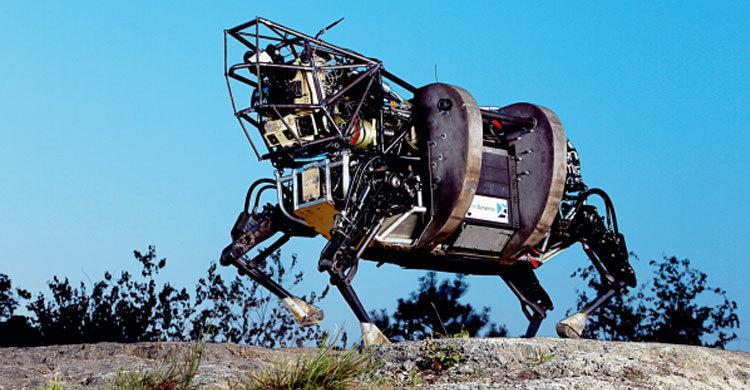US Marines drop Google`s robo-dogs for a simple reason

Some ideas are so enchanting that it`s easy to overlook small but frightfully important details.
When first seen in the wild, the LS3 robot dogs created by Google-owned Boston Dynamics seemed like they could be very useful dogs of war.
The mere sight of them on the battlefield ought to be enough to scare the enemy. Beyond that, the techno-canines could carry equipment and perform other onerous tasks.
It seems, though, that these robo-dogs have one small problem: Like quite a few real dogs, they make too much noise.
As Kyle Olson, a spokesman for the Marine Corps Warfighting Lab, told Military.com, the Marines drew the line at "the limitations of the robot itself. They took it as it was: A loud robot that`s going to give away their position."
This has caused them to be retired before they had a chance to become regular members of battle squads.
The whole project cost around $42 million and was a collaboration between Boston Dynamics and the Defense Advanced Research Projects Agency (DARPA), the Pentagon initiative dedicated to stretch-the-imagination ideas ranging from laser weapons to synthetic bacteria. The Marines last tested the four-legged devices, also known as robotic mules, in 2014.
A US Marines spokesman confirmed that the noise levels suggested the robot dogs couldn`t be used in real-world operations, but contended that was never the goal. More important, he said, was to learn about autonomous navigation and the challenges for an "operationally suitable quadruped robot" in terms of foot placement and dynamic control.
Boston Dynamics founder Marc Raibert told me: "LS3 is a research program to show the feasibility of legged robots, not a candidate system to be deployed. So framing the program as `shelved` is not how we think about it."
Let`s hope this lesson sinks in: Technology sometimes achieves so much, yet still fails at things that appear quite basic.
In warfare, stealth is a virtue. Clunking your way through a patrol isn`t going to be productive. Indeed, listening to the noise emitted by these dogs (video above), you really think that your most annoying neighbor is mowing his lawn at the crack of dawn. Raibert characterized LS3 as "about as quiet as a typical motor vehicle, such as a car or Humvee."
Boston Dynamics did make a smaller, quieter robo-animal, nicknamed Spot. The problem, however, is that Spot couldn`t carry much -- around 40 lbs, or one-tenth of what the bigger versions could tote.
Spot might have been useful in reconnaissance, except that it lacked the autonomous capabilities of the larger robo-animals, relying entirely on a human controller.
About the noise, Raibert described improvement: "LS3 is about 50 times quieter than BigDog, its predecessor, and Spot is 10-20 times quieter than LS3, depending on the mode of operation. They are not as quiet as people and animals, but we are making good progress."
A large, quiet engine seems as hard to create as a phone battery that lasts for more than a few hours. -CNET


